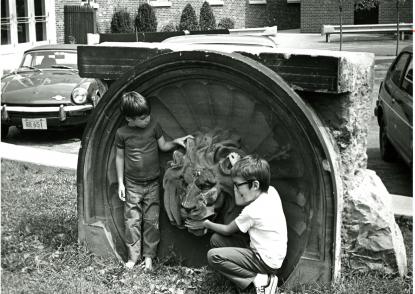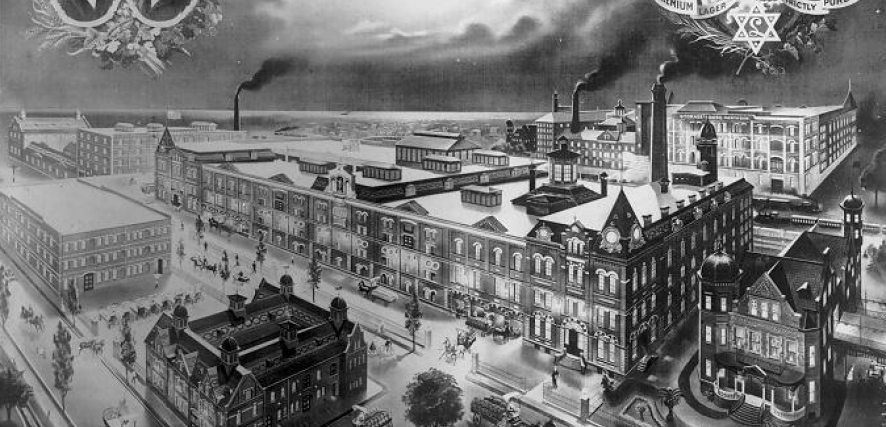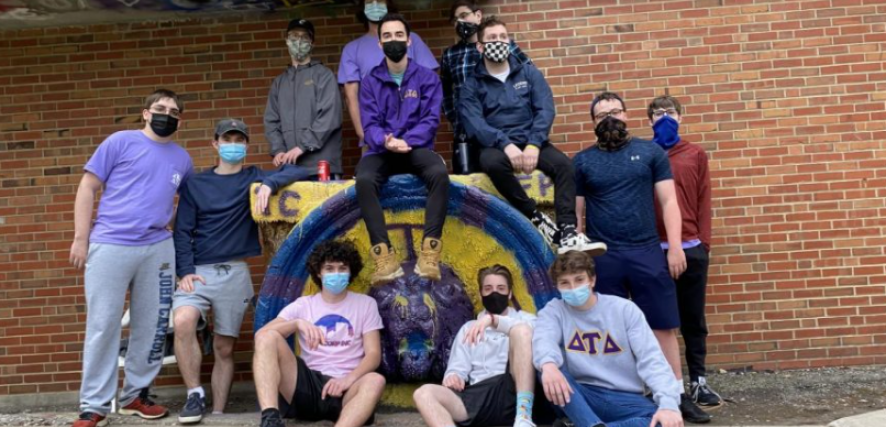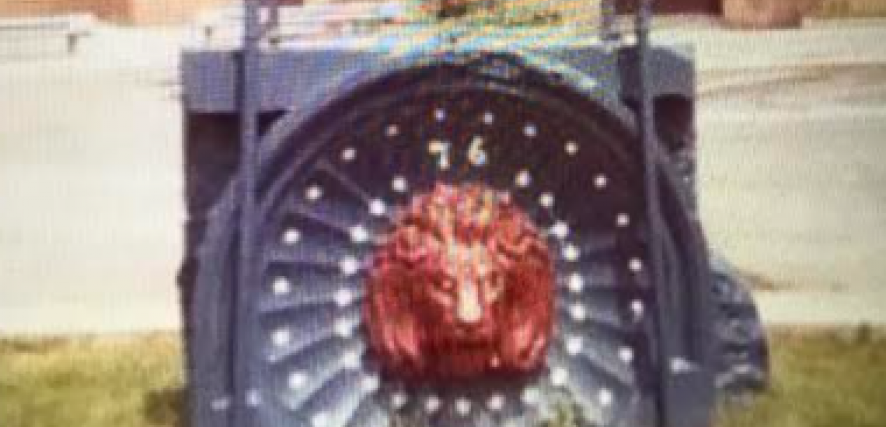
Painting the Pacelli Lion is a widely known JCU campus tradition, yet the origin of this massive sandstone monument is much less familiar.
The history of the statue goes the way back to the late 1800s and includes beer, two notable immigrant families, and a lot of spray paint. There are also a few theories on how John Carroll’s campus became the statue’s current home. After one alumnus investigated these theories, we can finally fill in the gaps and understand the whole story.
The Lion’s First Home
Cleveland’s booming beer business in the late 1800s laid the foundation for the Lion. The Leisy Brewing Company was Cleveland’s largest independent brewery when it was built on the city’s near west side in 1873. Issac Liesy and his two brothers, originally from Bavaria, Germany, left their small brewery in rural Iowa and came to Cleveland after visiting the city for a brewer’s convention.
The Leisy Brewing Company expanded and remained independent despite fierce competition from nearly 20 other local Cleveland breweries. The company continued to thrive until prohibition in 1920. It closed in 1923 after an unsuccessful attempt to make non-alcoholic drinks. However, the facility would reopen after the repeal of Prohibition in 1933.


